Translation: Geng Dun Qun Pei Biography
This article is translated from the Internet, the original address: Gendun Chopel - The Treasury of Lives: A Biographical Encyclopedia of Tibet, Inner Asia and the Himalayan Region
The translations of some names of people and places refer to the two books of the twentieth-century Tibetan monks (douban) (douban.com) and the spiritual journey accompanied by the runaway life Gendun group (douban) (douban.com) .
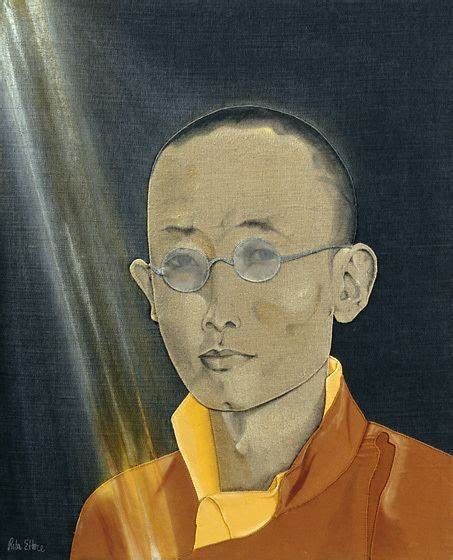
dge 'dun chos 'phel was born in April or May 1903 somewhere on the shores of Qinghai Lake, north of Amdo, when his father, a living Buddha and yogi of the Nyingma sect (ngakpa) a lags rgyal po and his mother pad ma skyid are returning home after their pilgrimage to U-Tibet. His birth name was Rig 'dzin rnam rgyal. It was before Colonel Younghusband rode across the southern foothills of the Himalayas on July 18, 1903, and Younghusband would force Tibet to touch the modern world and spur Tibet's modernization process. Gendun Qunpei died in October when he was 40 years old, and just two weeks later the People's Liberation Army entered Lhasa. Therefore, his life can be said to precisely span the modern history of Tibet.
He was identified as the reincarnation of rig 'dzin 'jigs med bsod nams rnam rgyal, dc1901), the living Buddha of the rdo rje brag dgon in Uzang who had visited more than a few years earlier. Dun Qun raised the family, and predicted that he would be reincarnated in this family. Therefore, this child is regarded by the villagers as another life of Dorjiza Rinpoche.
Gendun Chompei lived in the monastery of Gya' ma bkra shis 'khyil, the monastery of the famous 19th century yogi and poet Shakapa I, Tso Zhou Renzhuo (zhabs dkar tshogs drug rang grol, 1781-1851). After the first ten years of his life, it was located in Ngakmang (sngags mang) in the middle of Tongren County (Rebkong). His father was one of the two heirs of the local line of living Buddhas and the third or fourth heir to the line's founder, Rig 'dzin dpal ldan bkra shis (1688-1742). Like Peideng Tashi, Gendun Qun Peisheng was in troubled times and wandered between the two traditions of Nyingma and Gelug.
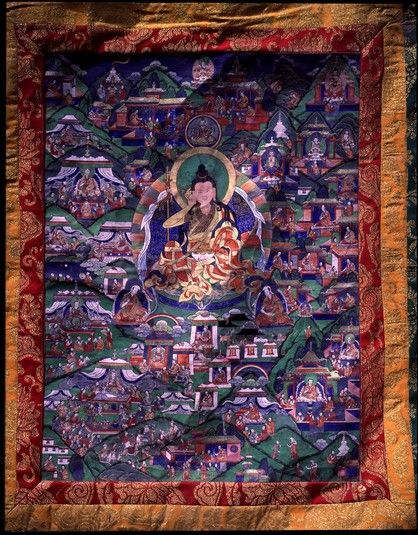
After his father died in 1912, Gendun Chompei was seen as the reincarnation of Terton Sogyal Lerab Lingpa (gter ston bsod rgyal las rab gling pa, 1856-1926) and the third Dodrubchen, Jigme Tenpai Nyima (rdo grub chen 3rd ' jigs med bstan pa'i nyi ma, 1865-1926) reincarnation. However, from the very beginning his parents disapproved of their son being the living Buddha, so at the age of thirteen he was sent to the Gelugpa temple Dhi tsha / lde tsha / ldi tsha dgon, a Gelug monastery near the Yellow River. Previously, he stayed at Rebkong and continued to study grammar and poetics, Sanskrit, Indian and Chinese astrology and art. This temple was regarded as a famous temple at that time because of the new course set up by the fourth living Buddha, Gedun Gyatso (a mdo zhwa dmar 04 dge 'dun bstan 'dzin rgya mtsho, 1852-1912). A learned Geshe (a degree in Tibetan Buddhism), he served as the Yinming teacher of the 13th Dalai Lama Tuden Gyatso before returning to Amdo to build the monastery. legal name.
At Ditcha Monastery, Gendun Chompei learned the basics of Yinming and participated in the debating of scriptures, earning a nickname that would accompany him throughout his life: Rdi tsha skam po or Skinny Ditsa (“Skinny Ditsa”). During his five years of basic Buddhist studies, he returned to Yama Tashi Monastery to visit relatives and friends many times, and he also went to the Nyingma sect to study, where he received the Ngakmang yogi Longchen Nyingthig (klong chen snying thig) and also learn tsalung trulkhor (rtsa rlung 'khrul 'khor) at the feet of Bka' rgya gter ston.
In 1920, the 18-year-old "Dicha Skinny" entered the Labrang Monastery of the Gelug Sect, began a six-year study, and gained an unparalleled reputation as an original dialectist. He also learned the basics of English and clock mechanics from a local American missionary, Marion Griebenow, or Xirao Tempe as he was called, whose excellent knowledge of Tibetan allowed him to communicate with Labb Learned monks from Leng Monastery discuss the differences in doctrine between Christianity and Buddhism.

After a few scandals on the debate grounds, coupled with his novel inventions of mechanical birds and thermal-powered paper boats, Geddon Cholpei began to feel the pressure of Gelugist orthodoxy to stretch his wings. At the age of 25, he joined a caravan to Lhasa and trekked for three months. In Nagqu, north of Lhasa, the entire team of two to three hundred people was detained for a month before finally being allowed to reach the holy city. Once there, Gendun Chompei entered the Bras spung sgo mang of Drepung Monastery, where one of the most prominent Gelug scholars of the time, Geshe Sherab Gyatso (dge bshes shes rab rgya mtsho, 1884) -1968) to study with one step. Due to the invitation of the Thirteenth Dalai Lama, he also left Labrang Monastery for Tibet.
The relationship between them was close and fiery, with Xirao Gyatso following the orthodox thought of the Gelug School at that time, while Gendun Chompei opened up new horizons and neglected his own studies to a certain extent. The entanglement that his mother gave Gendun Chompei was quickly used up, and he made a living by painting. Lhasa's aristocrats were quick to admire him because of his natural drawing skills, especially for his lifelike portraits and tigers "real enough to eat you."
On the other hand, Sherab Gyatso is in a special position. In addition to the teaching activities at Drepung Monastery, he also served as an assistant to the 13th Dalai Lama in the debate, the editor-in-chief of the 108-volume Lhasa new edition of the Tripitaka, and a teacher for several noble children. So he had a residence in the holy city, where he installed a rare personal radio and regularly listened to the radio to keep up with Mao's latest developments. Thus, despite his orthodox religious views, Geshe Sherab Gyatso was a rare figure among the senior monks, as he was well aware of events in the outside world and deeply concerned about the future of Tibet. He has a wide range of contacts, friends and disciples. When Gendun Chompei was engaged in painting in Lhasa, he often stopped by to learn about the latest information from far and near.

In the spring of 1934, at the residence of Sherab Gyatso, Gendun Chompei met Rahul Sankrityayan (1893-1963), a Hindu and Buddhist scholar in India. He was an adventurer, prolific writer and member of the Communist Party of India and a founding member of the Indian Farmers' Union. It was during Rahula's second visit to Tibet in search of ancient Sanskrit manuscripts. Appreciating Gendun Choppei's knowledge, Rahula invited him to join his entourage, promising to take the young Tibetan scholar back to visit India's holy Buddhist sites. In this way, a few months later, they set off to find the precious Bayeux scriptures hidden in the thousand-year-old scripture chamber on the snowy plateau.
Their friendship and collaboration led to 12 years of overseas life. He had not intended to stay abroad for so long, but once in India, his insatiable curiosity led him to continue studying Sanskrit, improving his English, and conducting a thorough survey of Buddhist archaeological sites. He developed a strong interest in the various writing systems of India, and became familiar with the classics of southern Buddhism and popular customs in India, and learned about the Indian independence movement and Gandhi's home textile movement. A measure by India's economically self-sufficient Swadesh movement, which called on Indians to spin their own yarn and weave at home to boycott British-made cotton). Rahula introduced him to the Mahabodhi Society and Shri Rama Krishna Vedanta Ashram in Darjeeling. Gendun Chompei began publishing articles questioning the traditional view of Tibetan history, world geography, and the origin of the Tibetan script. He wrote some poignant satire, aimed at his fellow countrymen, and some self-deprecating elements. He studied Sanskrit from Indian monks and met several Western Tibetan scholars, becoming the first Tibetan scholar to study ancient historical manuscripts of the Tubo Empire (7th-9th centuries) found in the Central Asian oasis of Dunhuang, just thirty years ago . He consulted with a Chinese researcher in Kalimpong and translated parts of the Book of Tang into Tibetan as a source for comparison. Theos Bernard (1908-1947) of Columbia University in New York invited him to go to the United States, but unfortunately, the outbreak of World War II prevented him from going. He had intended to introduce the snowy land to the West and to clear up some myths about Tibet's magic and mysteries.
In India, Gendun Chompei, who probably renounced his monastic discipline before leaving Tibet, wrote the Tibetan Desire Sutra, based on several classic Sanskrit sources as well as his own personal experience. He also smoked and drank heavily, and wrote a long wandering dirge. Several letters indicate that he was hesitant to return to Uzang rather than to Amdo's homeland, where he was accepted by the chief lama of Labrang Monastery, the 5th Jammuyang Rinpoche ('Jam dbyangs bzhad pa 05 blo bzang 'Jam dbyangs ye shes bstan pa'i rgyal mtshan) to help build a modern school system.
Instead of returning to Amdo, Gendun Chompei remained on the Indian subcontinent, from Swat in the far northwest to Sri Lanka in the far south, exploring the length and breadth of the Indian subcontinent, living frugally day in and day out, sometimes for his own poverty And wailing, sometimes getting small amounts of money from foreign scholars, and even begging a few rupees at one time from friendly missionaries.
By the late 1930s and early 1940s Gendon Chompel had established a solid reputation as a scholar, and after spending some time exploring Sri Lanka, he went to the Russian painter and explorer Nicholas Roerich (1874). -1947) for two years at their avant-garde Uruswati College in Kurumanari. There, he assisted Nicholas' son George (1902-1960) in translating the "Green History" (deb ther sngon po) of 'gos lo tsa ba gzhon nu dpal, 1392-1481), a major Tibetan One of the historical works, he read through and discussed the entire text with him. The result of their fruitful collaboration was a book of about 1275 pages, published in Calcutta in 1949.
The Rolechs are ardent supporters of the peoples of Central Asia, and are particularly excited about establishing the Mongol-Tibetan Buddhist alliance. Rolech is a renowned artist who designed the costumes and sets for the first performance of Igor Stravinsky's seminal work The Rite of Spring, which was presented in Paris in 1913 It was staged with Vatslav Nijinsky (1890-1950) as choreographer and Serge Diaghilev (1872-1929) as performance manager. In Kulu, this close-knit family is open to Mongolian pilgrims and travelers. They have a large library and what must be the earliest modern ecological research station, experimenting with medicinal herbs from the Himalayas, intending to combine traditional medicinal practices with modern Western science. During his stay in Kuru, Gendun Chompei is said to have read many books, including on Sufi mysticism, the Russian Orthodox Church, and possibly some Western philosophers (some scholars believe he read Schopenhauer, Kant, and Marx, but The only Western thinker he mentions in his writings is Darwin).
In his days abroad, Gendun Chompei had been a familiar figure to the residents of Kalimpong, where he went to escape the hot summer and worked at Babu Tharchin's (1890-1976) Mirror printing house, helping to publish The Mirror in Tibetan (Tibetan: Me Long), where some of his articles were published. In the 1940s, Kalimpong — the gateway between India and Tibet — became a hotspot for exiled politicians from the snow. Gendun Cholpei has mingled with radical Tibetans who are fighting for the future of what they call a "true Tibet" who advocate immediate reforms and even the overthrow of the Dalai Lama's Ganden Phodrang government. These include Phun tshogs dbang rgyal (b. 1922), Jiang lo can kung bsod nams rgyal po (b. 1898), and rab dga' spom mda' tshang), this is just the most famous example. They were joined by Gendun Chompei as their mentor and spiritual mentor to Bang Dachang Raoga, an admirer of Sun Yat-sen and founder of the ill-fated Tibetan Revolutionary Party.
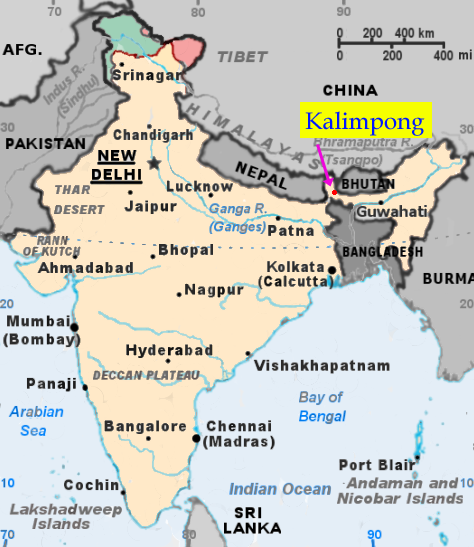
While traveling around the subcontinent, the Andor scholar has been collecting material and expertly mapping for an encyclopedia of classical Indian civilization and popular culture. It was decided that he should return to Tibet, via Bhutan and the Tawang region, to explore the territory along the famous McMahon Line, which at the Shimla Conference of 1913-1914 was once Tibet, India and the Republic of China object of controversy. He was going to draw a map showing Tibet's historical boundaries in the region. But it was a deadly move, as the map was intended by Bang Dachang Raoga to be used in the KMT and CPC plots against Tibet, which undoubtedly contributed to the later charges against Gendun Chompei that he was a communist spy.
Once back in Lhasa, Gendun Cholpei was sought after by all sides for his knowledge of the outside world, as well as his new ideas about Tibet. Progressive families in the nobility supported him and provided him with thrifty needs. He was asked various questions and began to teach grammar and art to some well-known figures, including two Nyingma lamas, Lha chung a pho (1905-1975) and Dawa Sampo (zla ba bzang po, 1916-1958). At the same time, he began to organize the research notes he had collected during his twelve years of research and exploration, and to write a political history of Tibet, his unfinished History of the Whites (deb ther dkar po). His fame attracted the interest of the British representative in Lhasa, Hugh Richardson, who began to pay more attention to this subject. He named the man "Chopel-la" ("Chopel-la"). Li Jisheng has both professional and personal interest in this Amdo scholar, because he is more or less aware of the political activities of the progressive Tibetans in Kalimpong, and in the latter years of his residency in Lhasa, he has also Ancient history generated a strong interest. He knew that Gendun Chompei had a solid reputation in this new and exciting field of research.
In the 1940s, the political atmosphere in Lhasa was very unstable, and in 1946, when Gendun Chompei returned, a fierce confrontation broke out between the two regents. The 5th Rezhen Rinpoche Dengjiang Baiyeshe Dambe Gyaltsen (rwa sgreng 5th thub bstan 'jam dpal ye shes bstan pa'i rgyal mtshan, 1912-1947) and the 3rd Daza Rinpoche Ngawang Songraotuo ( Violent clashes broke out between stag brag 3rd ngag dbang gsung rab mthu stobs, 1874-1952). Gendun Chompei became a target of religious extremists and conservative aristocrats. He was arrested, whipped, and framed for making counterfeit banknotes, being a spy for the Communist Party, and being bought off by both the Kuomintang and the Communist Party. He was thrown into prison, first in the Lhasa courthouse and in the snang rtse shar prison, then in the snow (zhol) prison at the foot of the Potala Palace. Research materials he wrote during his twelve years in exile in India were stolen and never returned.
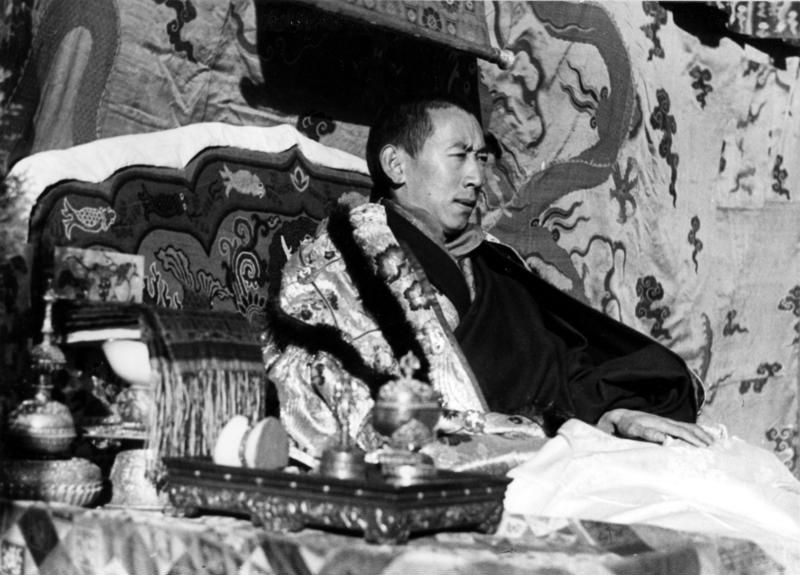
A few years later, after his release in 1949 or 1950, he returned to being a scholar. He owns a house on Barkhor Street, south of the Jokhang Temple, has an annual allowance, and was asked to resume work on writing "The White History," but he didn't. There he lived with a woman from Chamdo and began teaching again. He also started drinking more than usual, although he is said to remain sober and unaffected by alcohol. The Nagarjuna he taught to his Nyingma student Dawa Sambu. The Madhyamika philosophy of the most important teacher in Buddhism), which became the basis of the great philosophical work of Klu sgrub dgong rgyan (Klu sgrub dgong rgyan). He warned him that the paper, if published, could reverberate in the teaching community. In fact, it is this treatise that has been remembered by the orthodox Gelug and Nyingma schools as a key point in the heated debate that erupted over Gendun Chompei and his place in the Tibetan philosophical tradition. When the first woodblock print was published on handmade Tibetan paper and sold near Barkhor Street in Lhasa, there was an immediate uproar. Soon after, the Living Buddha Dunjue (bdud 'joms 'jigs bral ye shes rdo rje, 1904-1988) provided funds to reprint the book in Kalimpong, in the traditional format, but using steel movable type, on green industrial paper. This version lives up to the author's reputation: both within and outside of tradition.
In September 1951, from the roof of his apartment on Barkhor Street, Gendun Chompei watched with heavy eyelids the vanguard of the Chinese People's Liberation Army walking the streets of Lhasa, knowing that his hopes and that of Tibet's progressive intellectuals were over. shattered. He said to himself, "A priceless lapis lazuli vase was smashed into the stone". He and all his dreams of a future Tibet - to integrate into the modern world while retaining its own cultural identity and history - were destroyed. The second month, Gendun Qunpei developed severe edema, possibly the result of cirrhosis. He died in mid-October 1951.
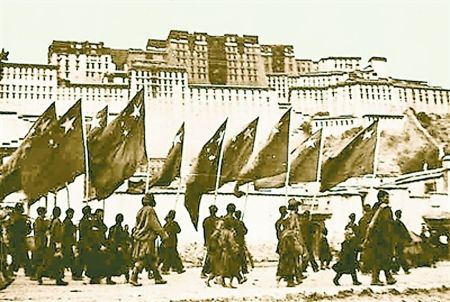
Like my work? Don't forget to support and clap, let me know that you are with me on the road of creation. Keep this enthusiasm together!

- Author
- More